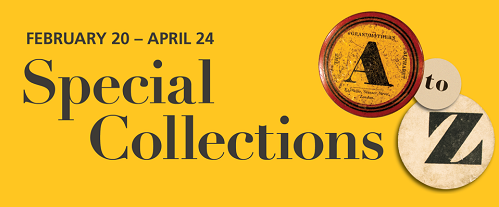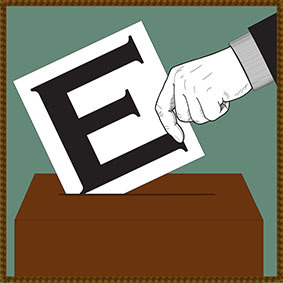E is for elections
The Baldwin Collection of Canadiana includes a significant collection of items relating to elections in Canada at all levels of government, dating as far back as the early 1700s.
The collection includes ephemeral items such as campaign posters, leaflets, political cartoons, pins and buttons, letters, bills and acts, proclamations and speeches.
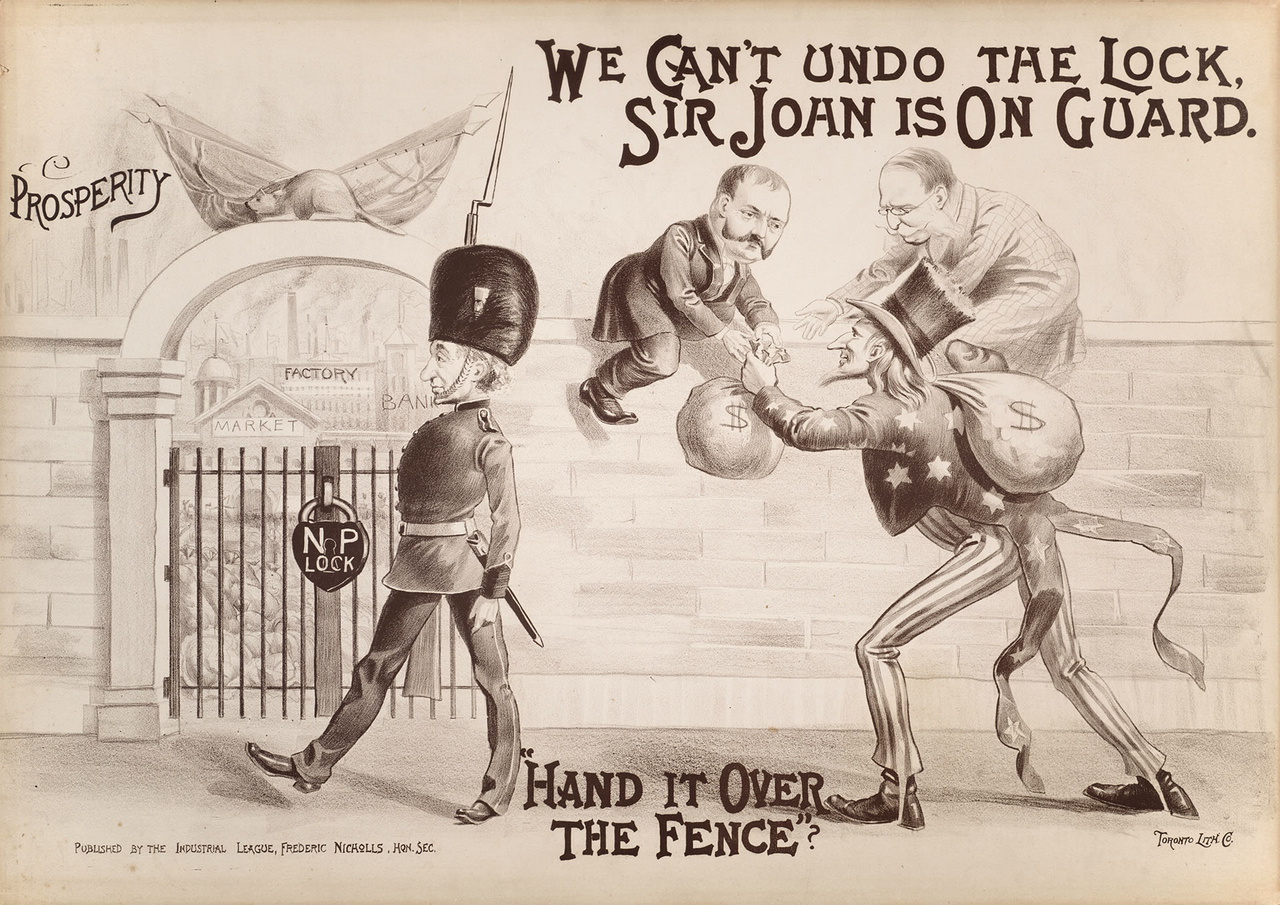
We can’t undo the lock, Sir John is on guard
Toronto: Industrial League: 1891
Broadside
Baldwin Collection of Canadiana
The main issue in the 1891 federal election was protectionism versus free trade.
This political cartoon promotes Sir John A. Macdonald's National Policy, a protectionist policy which levied high tariffs on imported goods.
The 1891 election was the first election where coloured and graphic posters were introduced to sway the electorate.
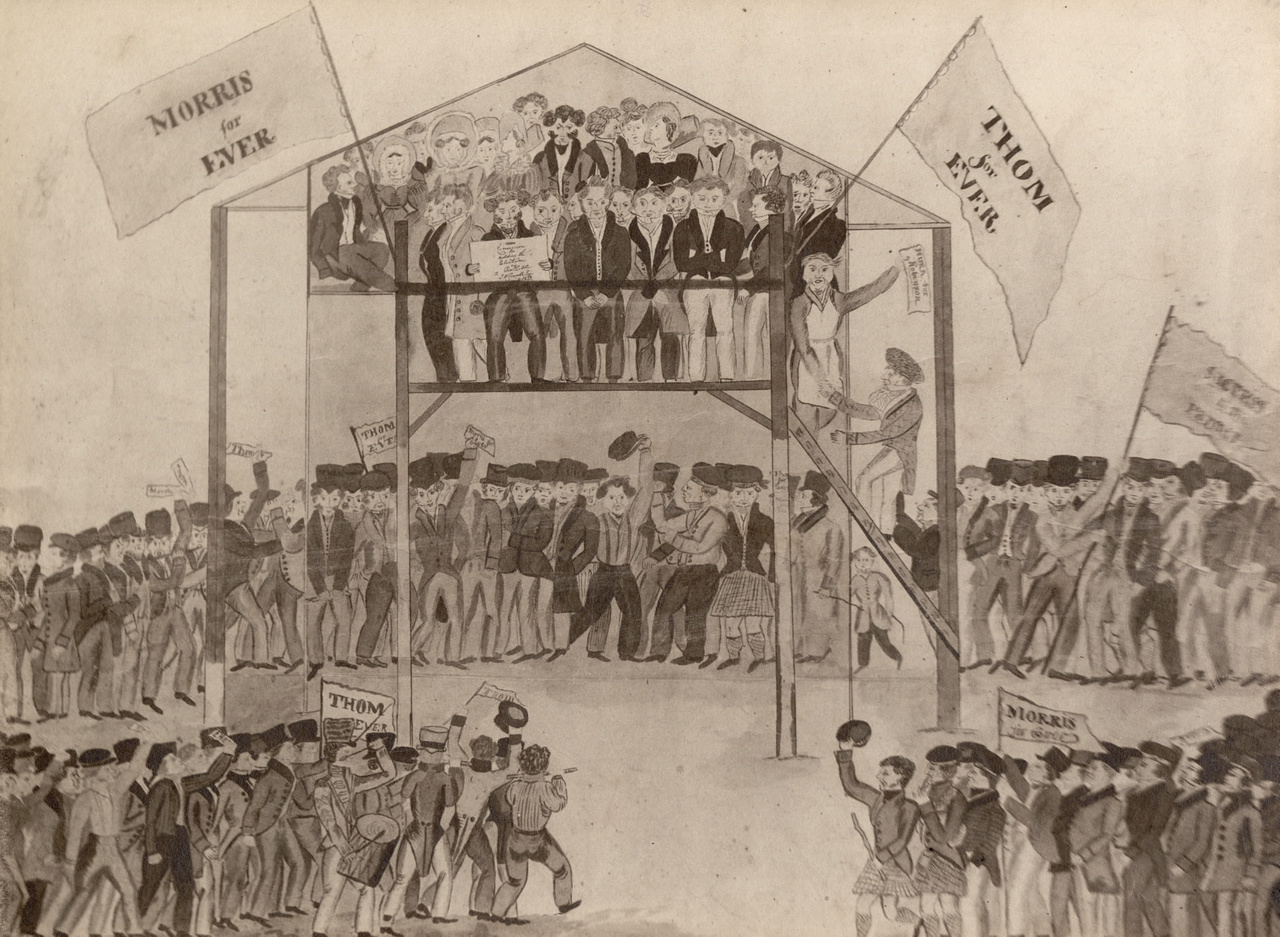
The rival candidates, William Morris and Alex Thom, Perth, Ontario
Francis Hugh Consitt, 1805-1859
Albumen print on card with pen and ink
1828
Baldwin Collection of Canadiana
This print depicts rival candidates Alexander Thom and William Morris during the election in Perth (Lanark Riding), in the general election of Upper Canada in July of 1828.
The candidates, along with election officials, are overlooking the crowd from the "hustings" — the platform on which candidates were nominated and from where they addressed the electors.
Before the secret ballot was introduced in 1874,Canadian voters had to stand on the hustings and declare their electoral choices. Today, the term “hustings” refers to the campaign trail.
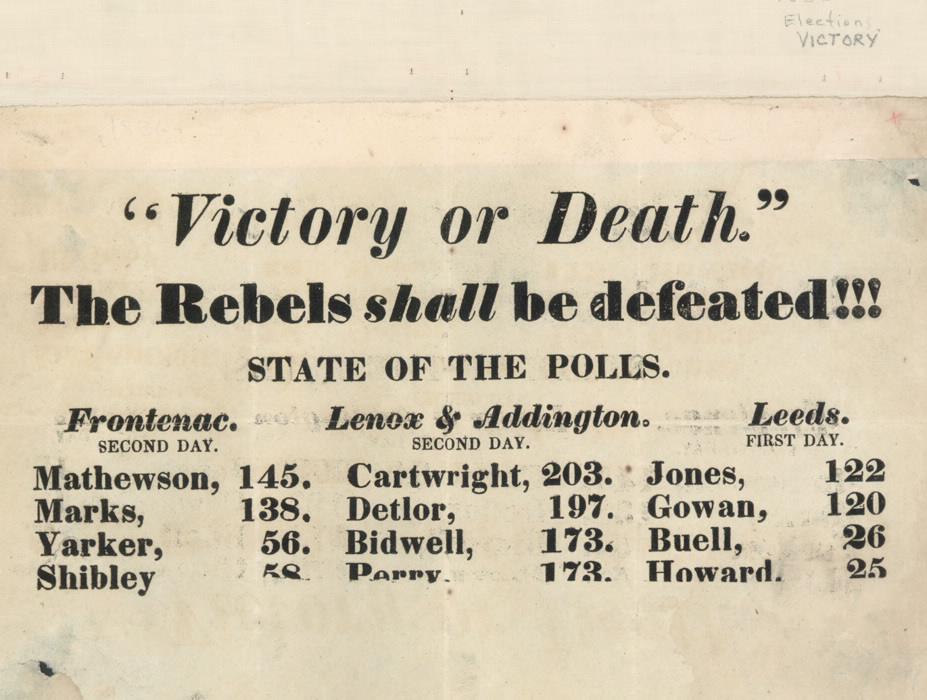
Victory or death: the rebels shall be defeated!
Frontenac, Leeds, Lennox and Addington, Upper Canada: 1836
Broadside
Baldwin Collection of Canadiana
This rabble-rousing broadside is evidence of the tense political climate that gripped Upper Canada through the 1830s.
Candidates calling for new democratic reforms — and critical of the concentrated power wielded by the privileged, Tory elites — are decried as rebels.
The 1836 election resulted in a conservative majority. A year later, tensions spilled over into rebellion in both Upper and Lower Canada.
Explore more!
Discover more by searching our Digital Archive.
